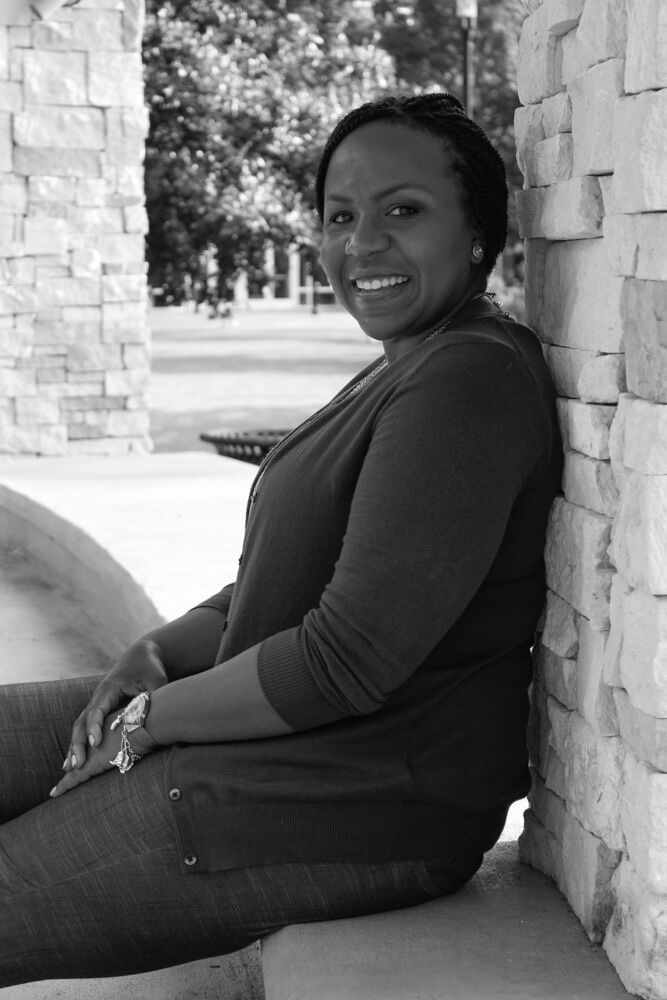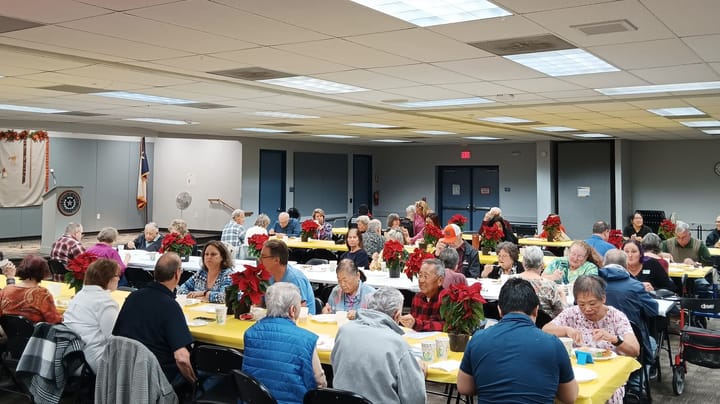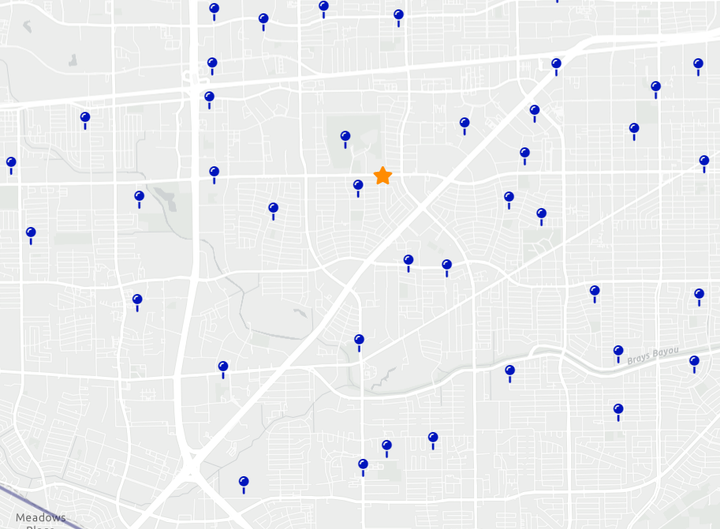How to Fight Human Trafficking: Q&A with Shani Bacy, Chief Program Officer at The Landing

As of Wednesday night (8/3), HPD’s blockade continues to reduce open-air prostitution on the Bissonnet Track to near zero. But the fight against human trafficking in southwest Houston isn’t over.
In 2016, researchers at UT Austin estimated that there were 313,000 victims of human trafficking in Texas. In late 2020, the Texas Human Trafficking Prevention Task Force reported that “when many industries slowed down because of COVID-19, traffickers have accelerated.”
A problem that big doesn’t go away overnight—especially not for the victims of trafficking.
Sex trafficking is just one form of human trafficking, but for years, it has dominated the stretch of Bissonnet between Plainfield and Centre Parkway (in the Westwood Super Neighborhood, just south of Sharpstown).
That’s why The Landing, a non-profit social services agency, runs a drop-in center for trafficking victims on Bissonnet, just north of the Track. The Landing’s mission is “to serve survivors of human trafficking and commercial sexual exploitation with a trauma-informed approach fueled by the love of Christ.”
Of course, the fight to end human trafficking is a team effort. So, how do we all work together? That was reporter Kace' Conaway's question to Shani Bacy, The Landing’s Chief Program Officer. Bacy oversees The Landing's three primary programs: outreach, advocacy, and the drop-in center.

Q: What does each program do?
A: With our outreach program, the main goal is to let potential victims…know about the work we do. That looks like us going on the street where people may be congregating, and maybe they’re being victimized, or maybe they’ve been victimized in the past. We’ll approach them if we can, providing them with [resources like] food, clothing, hygiene products and information about our services.
We do some court outreach, so we work with a couple of different court diversion programs to let people…who may have a prostitution or commercial-sex-related charge…know [about] the services that we provide to help them… We also do online outreach…
Less than 1% of victims of trafficking are ever identified. So the goal of that program is to get the information into their hands and increase victim identification.
The youth advocacy program is a field-based…24/7 crisis response program. Anytime a youth or minor has been sex trafficked or commercially sexually exploited, and we get a phone call—maybe from law enforcement or from another community partner—our advocates are on scene with that kiddo within 90 minutes…to provide emotional support, make sure their basic needs are being met, to be a voice for this child…
We’re bringing food, we’re making sure that they understand what’s happening, we’re trying to help find placement... After that immediate crisis, we also try to continue in relationship with the youth to prevent re-exploitation. [This includes] safety planning…meeting with the kid, helping them build social skills…helping them with goal-setting, helping them stay in school…
Our Drop-in Center is for adult victims of trafficking. We’re located on Bissonnet…it’s a drop-in center, a daytime center where people who are in the commercial sex trade or industry, or who have a history of that, can come…and receive a lot of different services, including basic need support (like clothing, food, hygiene products)…a resting room, access to computers. They can meet with a case manager [or] a therapist, and we provide a variety of classes and groups and activities…to help someone get on their feet…
Q: How many people have you guys helped?
A: Over the years, we’ve served over 1,850 people.
Q: How long have you guys been doing this?
A: We opened the doors to our drop-in center on Human Trafficking Awareness Day, January 11, 2016.
Q: With all this work that you’re doing, what makes it so significant to you? Why did you choose to get into this?
A: I found out about human trafficking…on a relief trip to Haiti. I was moved by hearing the stories of [people] forced into the commercial sex trade. So I came home on a rampage to understand what was going on and to do something about it…
At the time, I was a teacher. So I was doing a lot of volunteer work throughout the year… One year, I just decided I would move into this full-time…
I think that people deserve dignity, freedom, respect. To see what a great injustice human trafficking was really moved me…
Q: For people that are also moved by this subject, how would you recommend them getting involved?
A: There are a lot of ways to get involved. I think the first thing is to educate yourself. That can be done through a variety of ways…reading, connecting with an agency that’s doing the work, participating as a volunteer or donor, and following the social media pages of these agencies…
Anyone can be connected… We have students who are interns. We have business owners that donate either their skill or professional experience, [or] partner with us to hire some of our clients… The first step would be to one, educate yourself, and two, connect with an agency like The Landing to understand what kind of needs can be met through the work that you already do.
Q: You mentioned reading. Do you have any recommendations for that??
A: …Girls Like Us is a book by Rachel Lloyd. They operate an agency in New York… It’s one of the first ones I read when I was on my journey to understanding things…She also has a documentary…that is pretty reflective of the work that we do at The Landing…called Very Young Girls.
Q: How do you feel your work in educating people affects the community?
A: [We are] trying to raise awareness about human trafficking for a couple of reasons: one, to help people identify red flags so they can protect themselves and their own families…[from] being exploited.
And then…a lot of the work that we’re doing is trying to educate the community on what trafficking looks like so that you can identify it. Earlier, I mentioned that less than 1% of victims are ever identified. So, some of the work that we do is helping individuals, professionals, [and] community members recognize the signs of trafficking.
[Many people] see women who may be perceived as prostitutes…walking up and down the street. And for a lot of community members, that’s very frustrating, and that’s understandable. At the same time, as a social service agency, we recognize that there’s a likelihood that that person has been trafficked or is being trafficked…
Q: What are the red flags, the signs, and the appropriate levels of response? Do you immediately call police? Should you call a service?
A: There is a national human trafficking hotline, which is a tip line…to report something you’ve been witnessing, whether that’s on the street [or] in a place of business—a hotel, a massage parlor, a nail salon…if you suspect there is some trafficking or exploitation going on there.
…If you’re a professional that engages with the community regularly, so maybe like a medical professional or even a business owner in an area…like Bissonnet, you probably want to have some deeper relationships with some community service agencies as well so that you can go a step further and refer this individual to services…
When there’s a minor involved there’s a different response level. Social service agencies and professionals are required to report certain things when it comes to a minor who is potentially being abused.
Some the red flags would be—it depends on your setting—but someone who looks like they’re not able to freely leave a situation, someone who looks like they are being controlled by someone else, someone who has bruises…
[If you work in a hospital, maybe you see] someone there who is speaking for the patient—the patient doesn’t seem to have autonomy to make decisions for themselves. Those are some of the red flags. Sometimes trafficking looks like wage theft or labor violations…
Q: How do you feel your work impacts the victims?
A: Oftentimes victims don't have anyone else… We want to build relationships [and] be a safe place for them. Many social service agencies don't serve people who are still being exploited…
One of the things we work hard to do is to be a “low barrier agency”…there are not a lot of requirements to receive help from us. [We can help] someone who is still being trafficked…someone who has mental health issues, substance use issues, things…that would oftentimes prevent them from getting help from a different agency… We want to make sure that we’re able to be a resource to those who are probably not going to get resources elsewhere.
…We use a holistic approach in our programs…we look at clients as a whole person, addressing lots of areas of their lives, [including] safety planning (“How do you get out of your situation?”), working to meet emotional, physical, and social needs, etc. Financial literacy and economic empowerment is a large component of this work because it’s hard to ask someone to leave their situation [if] there’s no way for them to provide for themselves and their families. So we do a lot of work around training, development…scholarships to get higher education…therapy to address the trauma that they have experienced…advocacy…support in court…support for housing.
Oftentimes victims of trafficking leave their trafficking situation with criminal charges because they were being trafficked… It’s hard to get a job or find safe housing if you have prostitution arrests or prostitution-related charges. So we advocate with apartment complexes or the court or even maybe an employer to address barriers of criminal history.
Q: How are you guys funded?
A: …We have what we call “braided funding”… We have federal grants, we have foundation grants, we have individual donors, and we do fundraising…
Q: Where can people find ways to volunteer and donate?
A: …Our website at www.thelanding.org.
Q: What do you think we could all be doing better—the city, community members, organizations—to approach the issue of sex trafficking?
A: One thing is addressing the root causes. Right now there are a lot of initiatives to either stop what we see on the street or get victims out of the situation, but without addressing the root causes… There are a lot of things that come into play—community issues, social and systemic issues, poverty…
Q: What are some things you would like to see happen in the future?
A: I would love to see increased support and funding for agencies that are doing the work, increased collaboration, and ultimately seeing overcomers of trafficking thrive and get the help they need. Right now, it’s hard for someone to get on their feet. So, I would like to see a community that is open to helping and thinking outside of the box.
Q: Is there anything else you would like to add?
A: Oftentimes victims of trafficking are stigmatized…so it’s very hard for them to get out of their situation…
I hope that what you write promotes people to compassion and a greater understanding of the challenges of the people that are often looked at as the lowest in society, especially in the Bissonnet area.
Q: What are some ways to challenge that stigma?
A: …Put yourself in someone else’s shoes and look at them as people. That’s the part that’s really beautiful about the work that we do…we get to see them as people. We get to talk with them and celebrate with them and really get to know who they are…
Outside of that, educate yourself on the causes… There’s a quote that says, “It’s not what’s wrong with you; it’s what happened to you.” If we approached people with that kind of curiosity and humanity, that would be a great start.
We have edited for brevity, grammar, and clarity. Significant removals have been marked by ellipses (“…”); additions have been marked by brackets (“[ ]”). In every instance, we have sought to be entirely faithful to the meaning of the original.
Authors
Kace’ Conaway is a legal studies major at Houston Christian University. She has always had a deep love for writing and is grateful for the opportunity to share that love with the Sharpener and its readers. She hopes her work will have a positive impact on campus and in the Sharpstown community.
Tyess Korsmo, the Sharpener's editor-in-chief, moved to Sharpstown in 2019 to earn his Master of Liberal Arts at HCU, where he now teaches English and history. He also teaches English in a maximum-security prison.



Comments ()